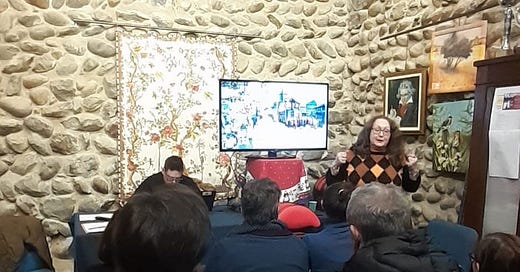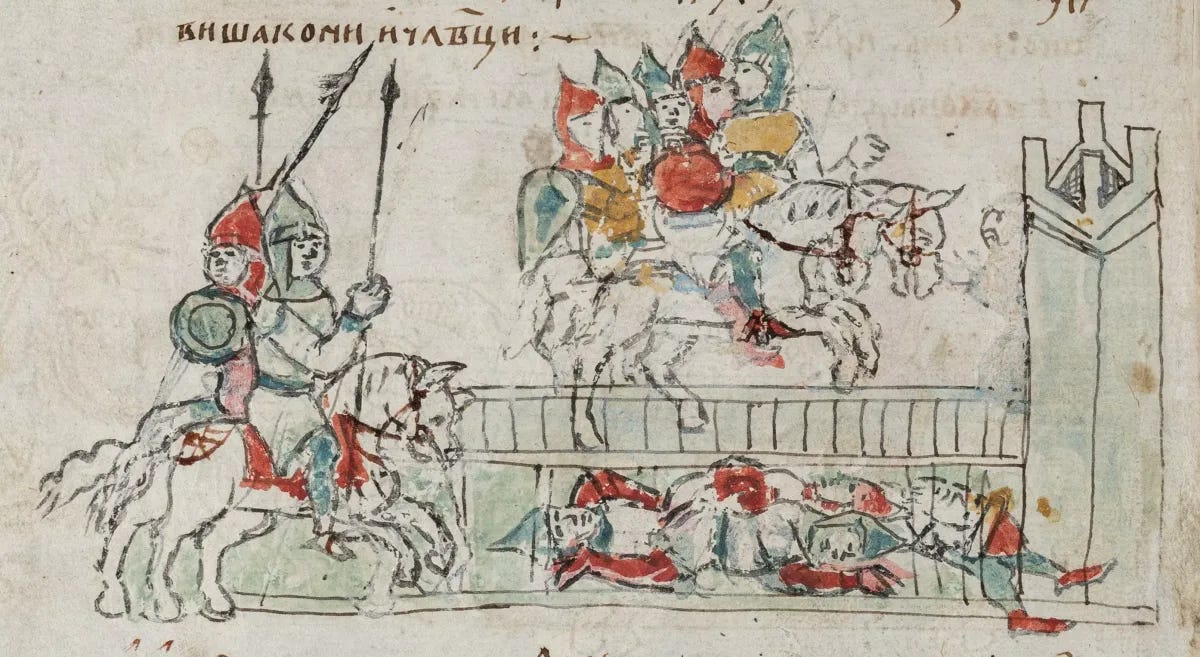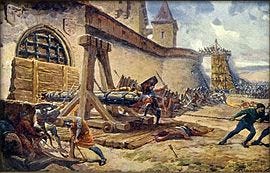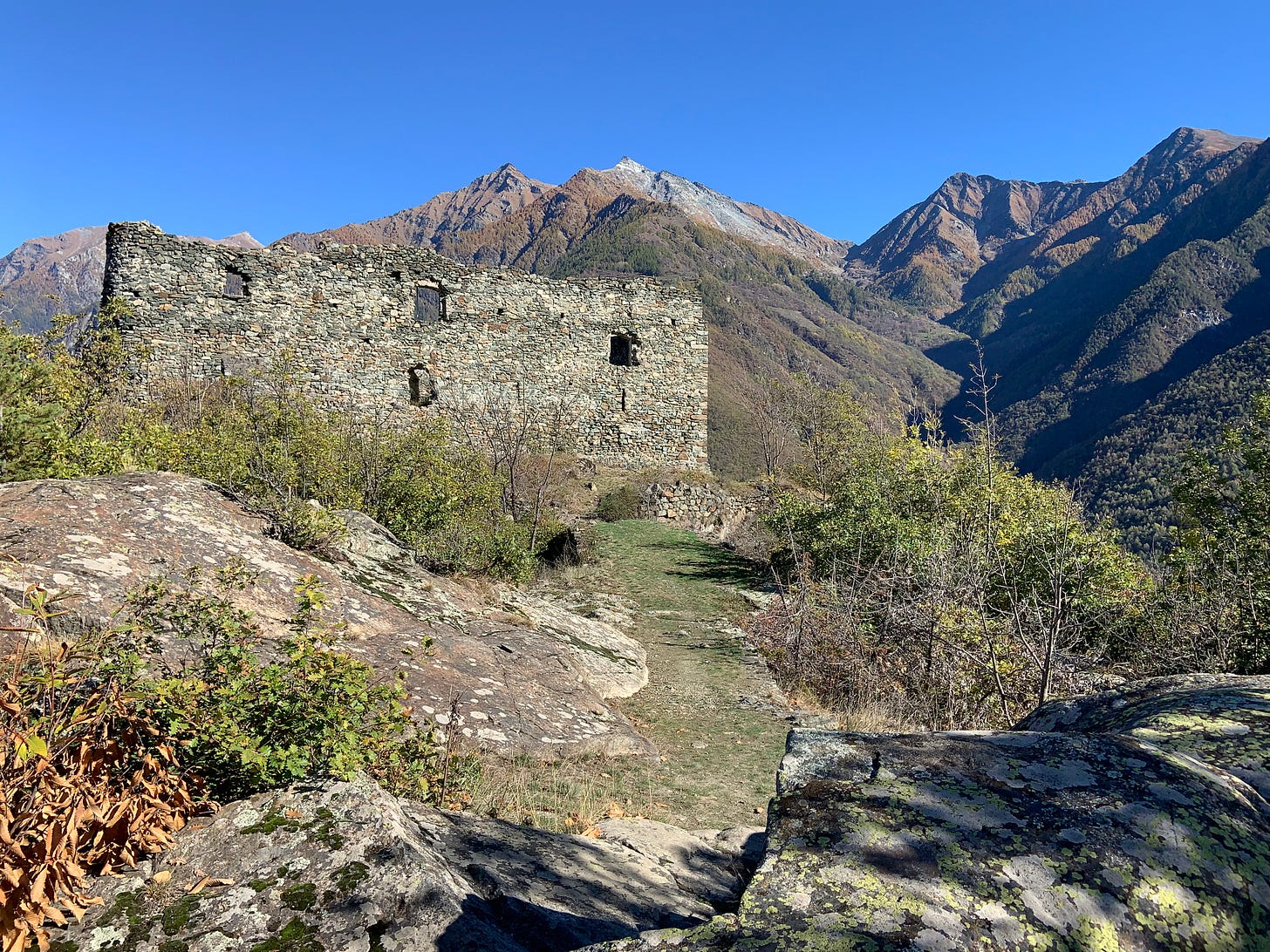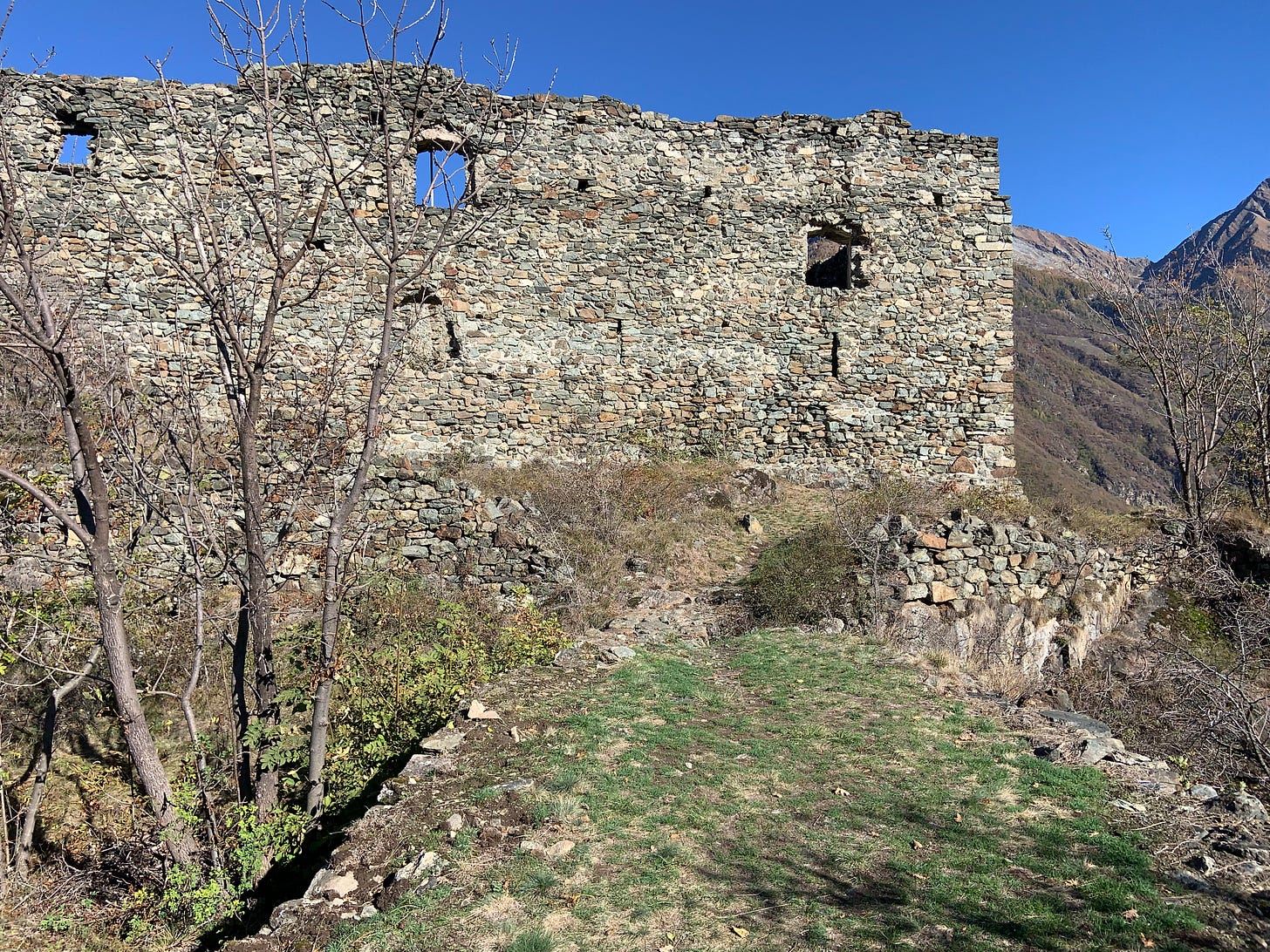A Castle's Unsung Hero in the Battle Against Invaders
This article explores the vital role of moats in castle defense, illustrating their significance through the story of brothers Oleg and Yaropolk and the dry moat of Villa Castle in Valle D'Aosta
For my conferences on the history of Russia, I had to study endless sources and noticed some particularities that I discuss in my articles (find them on the summary page). In my research, I suddenly discovered an explanation for a strange fact I noticed when I visited Villa Castle in Valle D’Aosta some time ago. Here I tell you about it.
Tales of chivalry and gallant knights often romanticize the moat surrounding a castle. However, the moat's practical role in defense cannot be overstated—it served as a formidable barrier against invaders, providing both physical protection and psychological warfare. The tragic story of the brothers Oleg and Yaropolk (977AD), princes in Ancient Russia, illustrates the interplay of familial conflict and military strategy in the context of castle defense.
The Conflict between Oleg and Yaropolk
Oleg and Yaropolk, brothers of the same father but with different mothers, had a complicated relationship marked by rivalry and betrayal. Raised apart and influenced by different relatives and mentors, their destinies were tragically entwined with the ambitions of others.
When Oleg retaliated against the noble Lyut Sveneldich—a choice many historians believe was provoked by the latter's encroachment on Oleg's lands—he unknowingly set in motion a series of events leading to his downfall.
From the point of view of a man in the early Middle Ages, hunting in another man's woods was a crime punishable by death. As we said in the previous article, the woods were not only a source of food but also a place where the prince and his men trained in conditions of natural danger. If we look at it from this point of view, Lyut knows well what he is doing and how it could end. That is, this was nothing but a conscious provocation.
Sveneld, father of Lyut and mentor of Yaropolk, seeks vengeance for his son's death. He incites Yaropolk against Oleg, whispering promises of power. Two years after Oleg's fateful decision, Yaropolk marches his army against his brother, leading to a climactic encounter near Vruchiy.
The Chronicle tells this story:
In the year 6485 (977). Yaropolk went against his brother Oleg in the Derevskaya land. And Oleg came out against him, and both sides fought. And in the battle that began, Yaropolk defeated Oleg. Oleg and his warriors fled to a city called Ovruch, and a bridge was thrown across the moat to the city gates, and people, crowding on it, pushed each other down. And they pushed Oleg from the bridge into the moat. Many people fell from the bridge, and horses crushed people. Yaropolk, entering Oleg's city, seized power and was sent to look for his brother. They looked for him but did not find him. And one local man said: “I saw how yesterday they pushed him off the bridge.” And Yaropolk sent to find his brother, and they pulled out corpses from the moat from morning until midday, and they found Oleg below under the corpses; they carried him out and laid him on a carpet. And Yaropolk came, wept over him, and said to Sveneld: “Look, this is what you wanted!”
The Battle and the Moat
As the brothers clashed, war ensued in chaos. Oleg's army was overwhelmed, and in a scramble for safety, the soldiers rushed towards the city gates, pushing each other onto a bridge over the moat. Here, the moat's presence proved decisive. In the crash, Oleg fell into the moat designed to protect him, marking a turning point in the battle and their tragic history. There were many rivers and streams in Russia. There was no problem filling the moat with water. However, I have the impression here that the moat was dry.
The Moat of Villa Castle
One of the oldest castles in the Aosta Valley, Villa Castle's ruins offer intriguing insights into the function of moats beyond their watery defenses. Perched on a rocky outcrop near Challan San Vincent, this castle had a unique dry moat that could not be filled with water, as there were no nearby water sources. Thus, creating a round moat there was impossible, only a short piece.
Moreover, even if it were possible to fill such a structure with water, it would be impossible to change it, and the situation would be life-threatening because the water would carry all kinds of infections.
This design, dry moat, presented its advantages. The absence of water made it impossible for a battering ram to reach the castle walls, effectively neutralizing a significant threat to its defenses. Instead, the dry moat could be lined with pointed poles, forming a deadly trap for any would-be attackers who fell into it.
Lessons from the Moat
The story of Oleg and Yaropolk, alongside the example of Villa Castle, illustrates the duality of moats in medieval warfare: They were both shields against enemy forces and harbors of tragedy during desperation. In this instance, the moat protected the castle and reflected the brothers’ more profound struggles, shaped by familial loyalty, betrayal, ambition, and revenge.
When we consider moats' historical significance, we recognize their essential role in power dynamics, conflict, and the unforeseen consequences of choices made in the heat of battle. While traditional moats served as defenses against external threats, dry moats like those of Villa Castle reveal their adaptability in medieval warfare.
Ways Moats Were Used in Castle Defense
Water Barrier: Traditional moats filled with water deterred attackers by creating a physical barrier that was difficult to cross.
Psychological Deterrent: The mere presence of a moat could demoralize enemies and dissuade them from attack.
Slowing Down Enemies: Moats slowed advancing troops, making them vulnerable to defensive fire from the castle.
Battering Ram Neutralization: Dry moats prevented battering rams from effectively reaching the walls.
Defensive Traps: Dry moats could be lined with sharp poles or spikes, creating a lethal obstacle for anyone who fell into them.
Strategic Retreat: Moats provided defenders with a means of escape, though they could also lead to tragic ends, as demonstrated in the story of Oleg.
Whether filled with water or left dry, Moats exemplified the ingenuity of castle defense, blending functionality with the inevitable chaos of human conflict.
ARE YOU INTERESTED IN OTHER STORIES?
They are here: https://amzn.to/42zESYu with complete descriptions
P.S.
“Either My Son or Nobody” is now available in a third edition in digital formats.
“Those Eyes Behind The Glass Door” is available, too.
You can purchase them here by contacting me for €5.00
I do not have paperbacks.
Please email me at liudmila.books@gmail.com to request my stories and specify your preferred file format. I typically respond within one working day.
I can add dedication on request.

